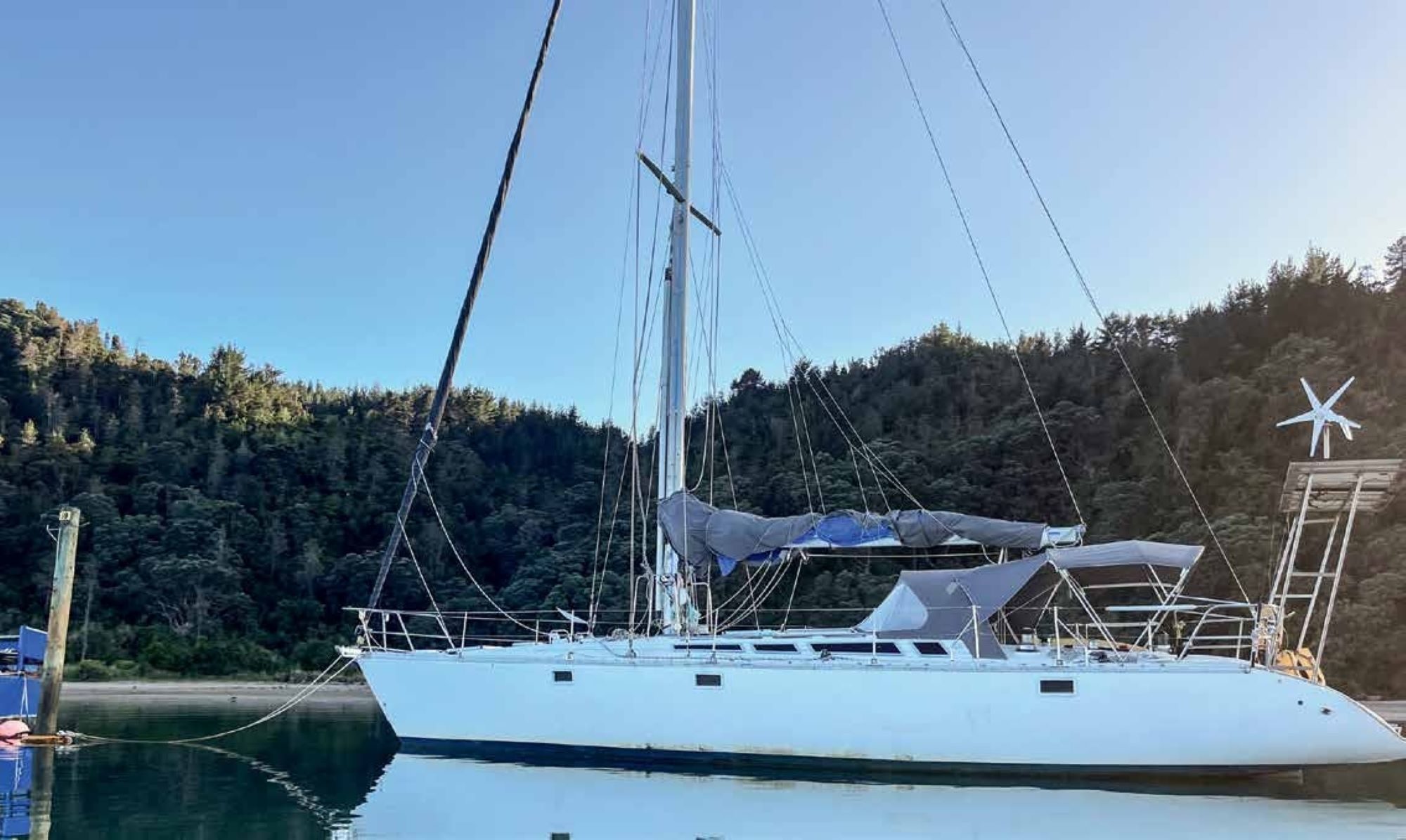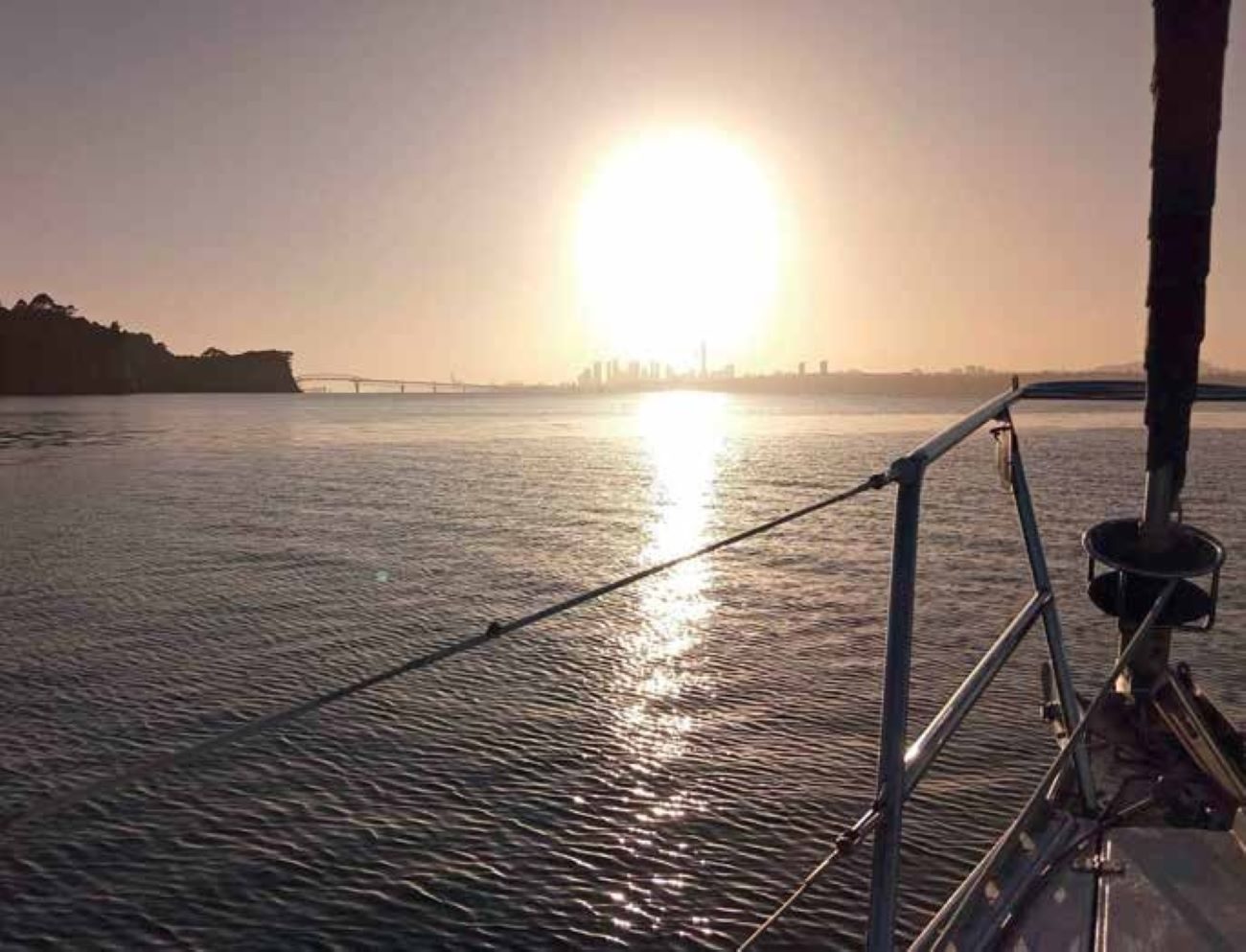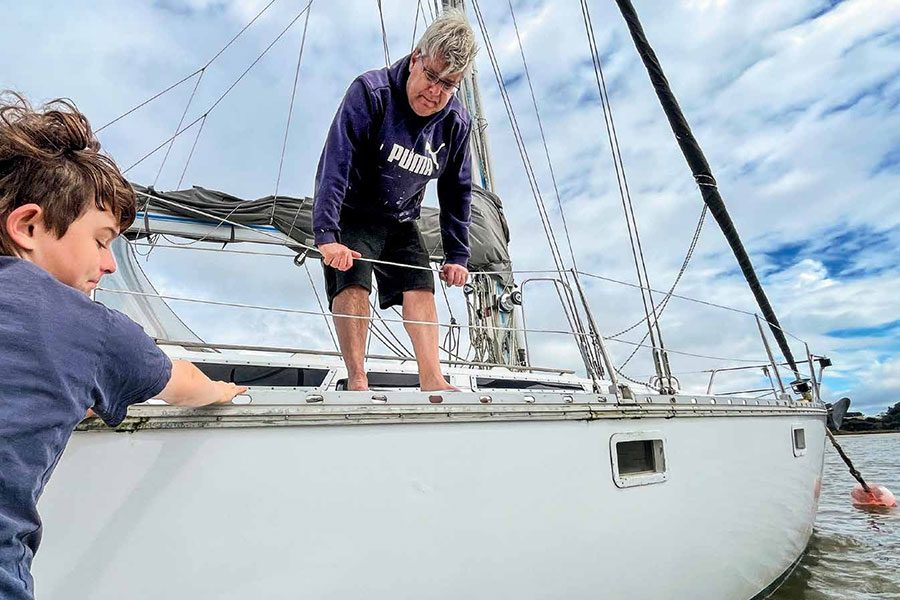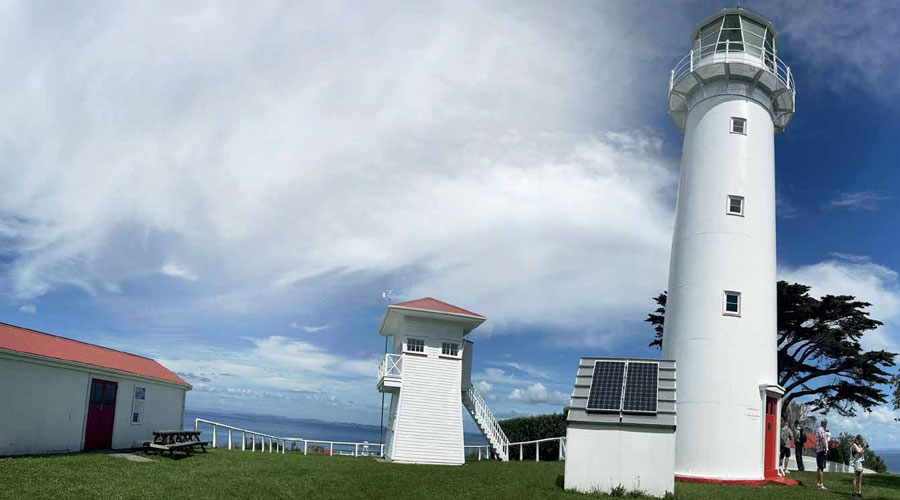

We were so excited – after cyclones and high winds we finally found ourselves with the opportunity for a day excursion on the water.
Tiritiri Matangi Island sits an hour’s sail away from Gulf Harbour. Two years ago we attempted to anchor at Hobbs Beach, but on a beautiful, sunny summer’s day, the bay had been crowded with other boats and after a couple of attempts at close proximity anchoring, which was not a comfortable experience for anyone involved, we meandered out of the bay area and floated off the island for a bit while we gathered ourselves to work out what to do next. Decision made, we headed over to Shakespeare Beach (Whangaparaoa Peninsula) for fun and frivolity; the kids spent the afternoon squealing and laughing as they dove from the bow into the blue depths below.
But March 12 was like a day of new-found freedom: no work and no cyclone. We were mindful that we only had a day, from early in the morning until 6:00pm, so we picked our destination with care. Not too far to sail from Gulf Harbour, Tiritiri Matangi Island is full of interesting history – first a fishing spot for early Māori, then a farm, a military base, and now a wildlife sanctuary. It was a day begging to be used for exploring! Our decision was made.
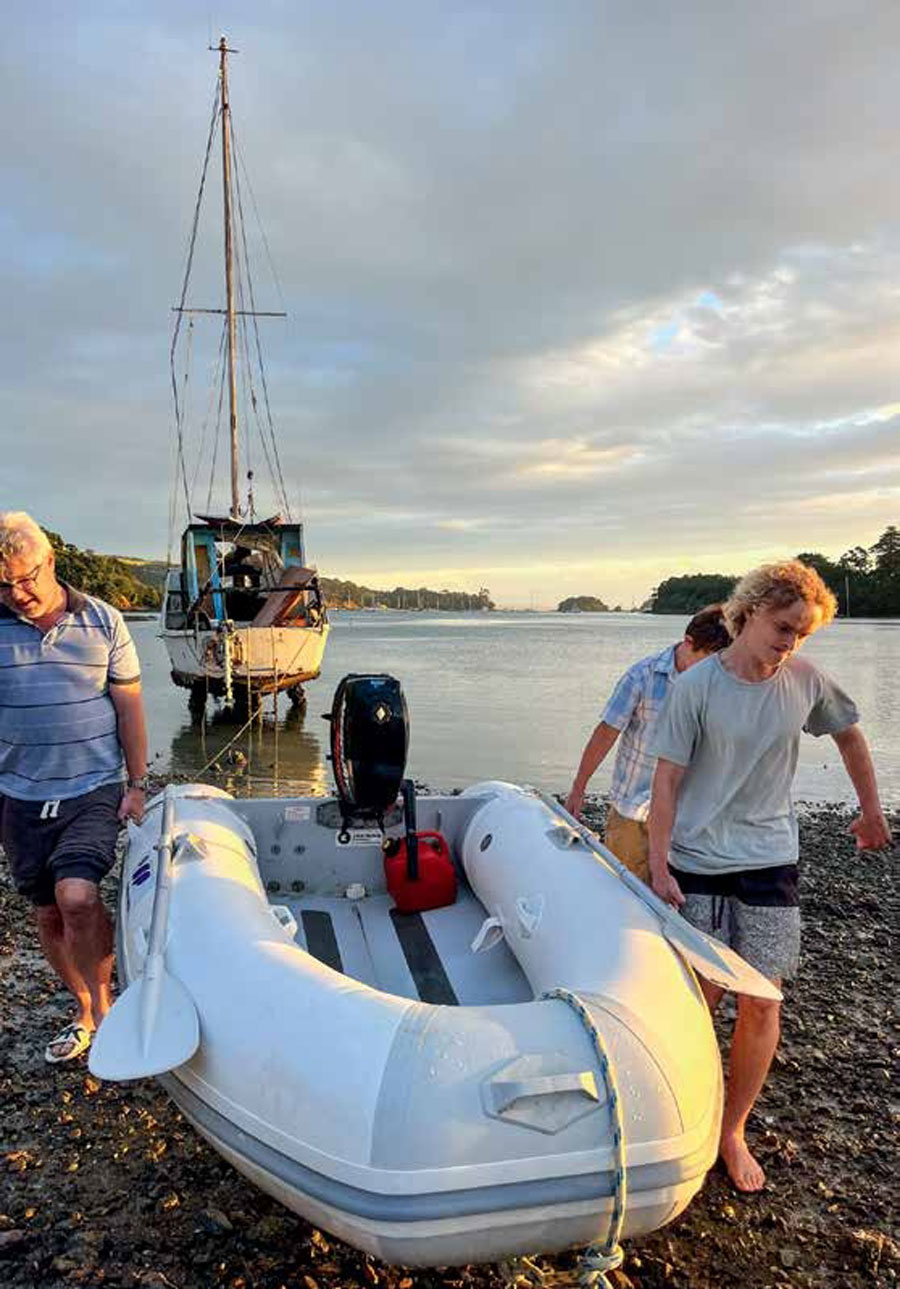
We departed the marina and began to motor our way over to Tiritiri. Sailing – the real type with wind billowing our sails – is by far our preferred way to move from one location to the next, but on this day the wind had different ideas. It was flat-calm.
Pleased to see only one other yacht anchored at Hobbs Beach, we found our spot, dropped our anchor and waited to ensure we weren’t dragging. There is nothing better than a nice soothing cuppa; so much so, sipping tea while we sit and watch is part of our anchoring ritual.
The water at Tiritiri Matangi was crystal clear, and the anchor was visible even though it lay seven metres beneath us. This is the type of anchoring Chris Jnr enjoys, and in no time he found himself in his wetsuit snorkelling down to the anchor. Checking to make sure the anchor is well-placed and firmly holding after anchoring is a really good habit, no matter the clarity of the water. We don’t do it often enough and I’ve made a mental note to keep this practice up.
The wind had picked up a little, but we weren’t dragging so we went and visited Tiritiri. Our 5hp outboard motor is fantastically heavy, and sometimes it’s more effort than it’s worth to use, so instead we rowed and with the wind pushing us along the trip wasn’t too difficult.
Our tender is one of the older types – blow up sides with a metal hull; aside from the need to replace one of the wheels, which would make it easier to pull, it is quite heavy. With the outboard motor in place, it requires at least four of us to lift it.


I’ve often thought if I found myself overboard and Kirsten and the kids needed to get an outboard-powered tender to me quickly, I’d be far more confident if they had a lighter model. In my mind, I’m making a list of things I want to check out at the Auckland Boat Show (which at that point was going to happen a couple of weeks later). So far, my list included an electronic outboard motor and a more modern, lighter tender.
Once on Tiritiri we heaved the tender up onto shore at Hobbs Beach. We then walked the 600m track from Hobbs Beach over to Tiritiri Matangi Island Wharf. The track was partially closed due to erosion, but we were able to walk along the high tide mark on the stony beach. We then walked 950m up from the Wharf to the Visitor Centre.
As we walked, we also found a massive array of bird life (as you would expect in a sanctuary such as this) – and by chance at the Tiritiri Lighthouse (near the Visitor Centre) we came upon a pair of takahē, an indigenous flightless swamphen. Takahē were believed to have become extinct in the 1800s, only to be found again at Tekapo in the South Island in 1947. Some years ago, one pair was moved to Tiritiri Matangi where they are happily nesting and, I assume, mating to grow a sustainable base.
Rowing back was a little harder as the wind was against us. Again, it reminded me to look at tenders and outboard motors at the Auckland Boat Show.
Which is where we found ourselves two weeks later… On Saturday 25 March, we arrived at the Viaduct for the Auckland Boat Show. The three kids, all teenagers, wanted to come as well; their interest in boating is growing all the time, which is quietly making me very happy. As much as I’m keen to travel the world (even half the world) on Sauvage, I don’t want to be dragging my kids along if they don’t really want to come.
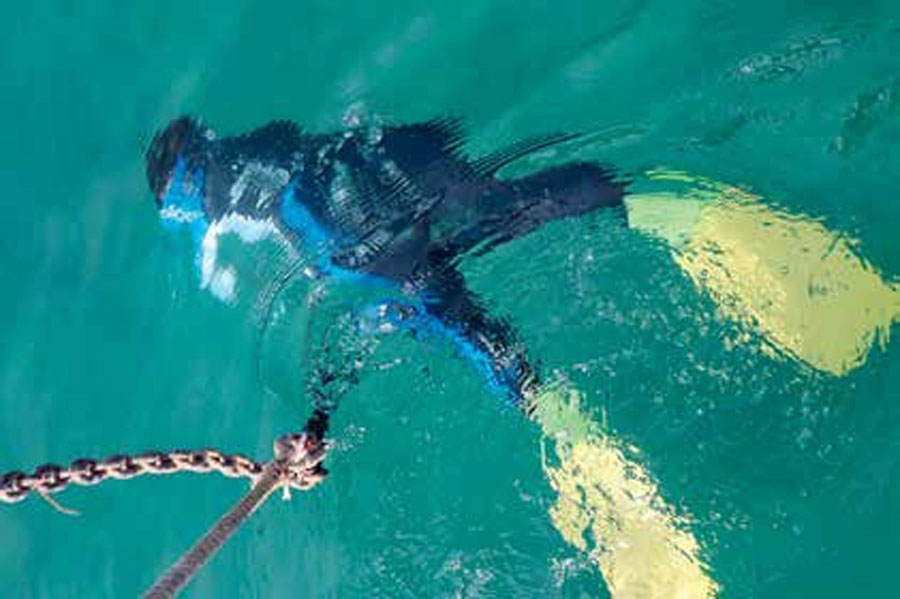
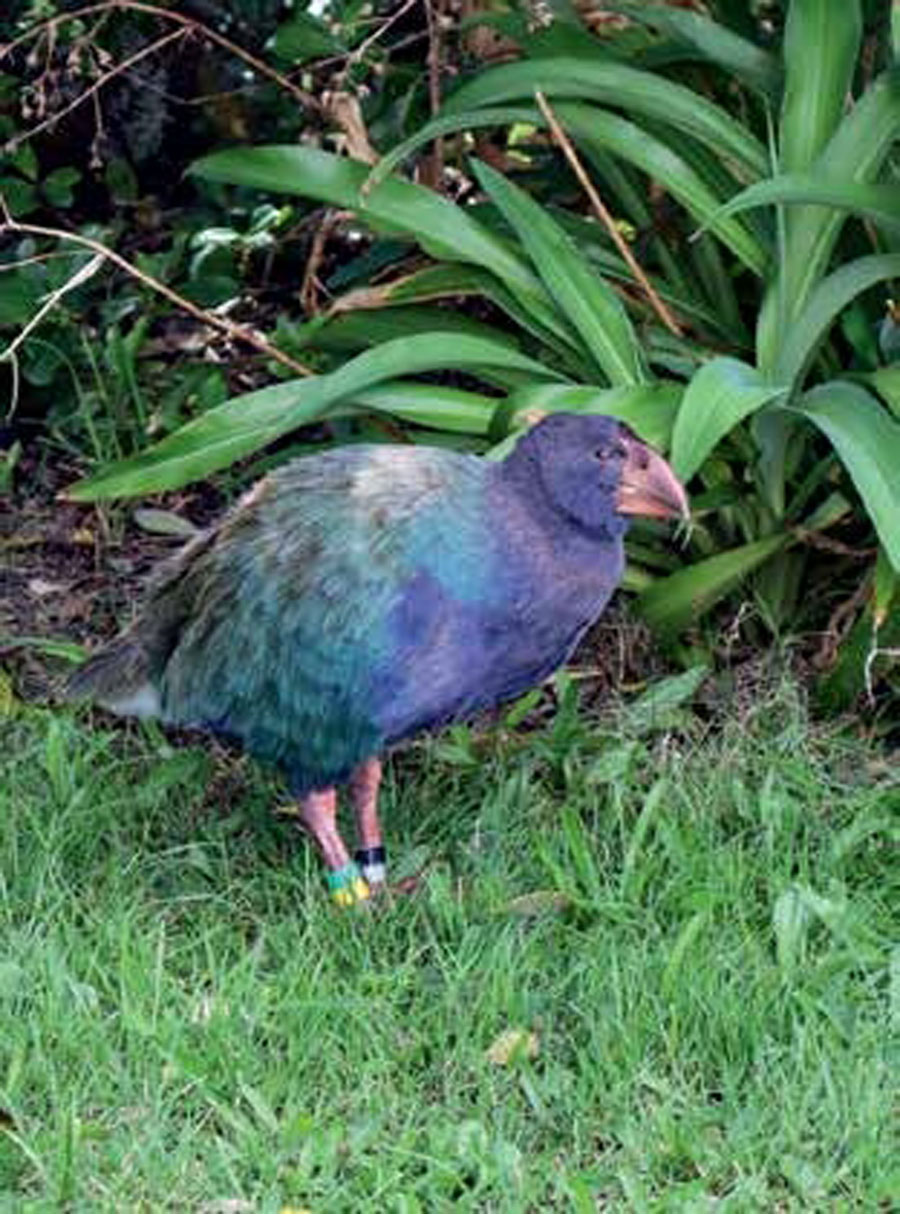
By chance the first exhibit we found at the boat show was for inflatable dinghies (or tenders). Yes! In fact, we came across several inflatable tenders, all much more modern than ours, but more importantly, so much lighter! We were impressed; some of the features were very sexy: light but rigid air decks, internal paddle storage, rings for easy three-point lifting on and off our yacht and more.
We also found a couple of electric outboard motors. They were fairly similar in design. One of the features I liked the best – other than their use of electricity rather than petrol, which in my opinion is where the future lies in boating – was the ability to take the components apart to create a much lighter, portable system. So light, even my 13-year-old daughter could carry it around.
Both electric outboard motors provided quite a bit of grunt, which is great if you need to go a longer distance on the tender.
I came across the Australian company from whom I purchased my watermaker a year or so ago and discovered a few small but useful upgrades to my system. They very kindly offered to send me a replacement part, and I am keen to add this to my existing watermaker as it will give it a longer-lasting grunt (the sea-water inbound pump under-performed, often resulting in water drying up. They have since replaced the pump with a larger model).


We were able to go on board yachts that were on sale. I learned a lot from the different layouts of the other yachts. Sauvage was built in the 1980s which seems a lifetime ago now, and some of the design components are a little dated. We have a four-cabin layout with two heads. The bow head, accessible from both bow cabins, lies at the front of the boat which means space has been lost in the saloon to allow for the bow head. The saloon on Sauvage also seems narrower than more modern layouts; we think it’s because the benches are built to compensate for cupboards that are attached to the bench. More modern layouts have cupboards that float above the bench instead, allowing the whole kitchen to move to the side and providing more space in the saloon. Food for thought. But, as Kirsten rightfully pointed out, it would be quite a big modification and should be planned well in advance.
Talking about boat fixes. I had to remove the roof-inset window glass as we had a leak… but that’s a story for next month’s article. BNZ

